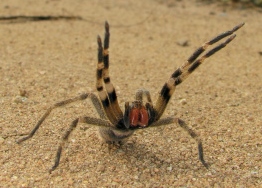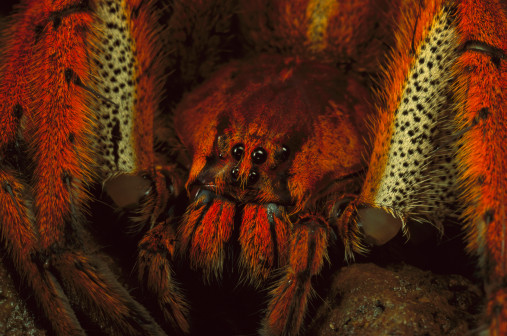Classification
Domain:
Eukaryote- This organism is characterized as a eukaryote because
of its multicellularity, membrane bound organelles, and a true
nucleus. Other eukaryotes include:
Red Algae, the
Split Gill Mushroom, and the
Giant Panda. Pictured to the right is a generic eukaryotic
animal cell.
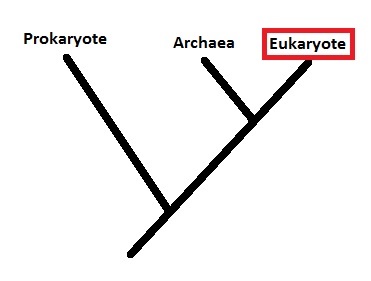
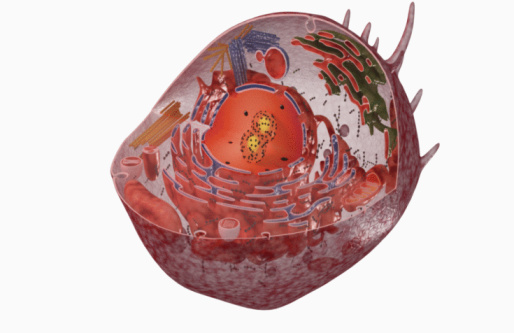
Kingdom: Animalia- P. fera identifies
with the animal kingdom for a few main reasons. Animals are all
multicellular, heterotrophic,
reproduce sexually,
lack of cell wall, and are mobile at some point in their life
cycle. The following organisms are all members of the animal
kingdom:
Tiger Flatworm,
Magician's Cone Snail, and the
Great Seahorse.
Phylum: Arthropoda- The common characteristics
of this phyla that P. fera exhibit include a segmented body,
paired and jointed appendages such as legs, external feeding
structures, or antennae, a hard exoskeleton made of chitin which
they must molt (an
amazing video of the giant spider crab going through the molting
process), and bilateral symmetry. Some other arthropods
include the
Embossed Stonefly,
Eastern Swallowtail Butterfly, and the
Deer Tick.
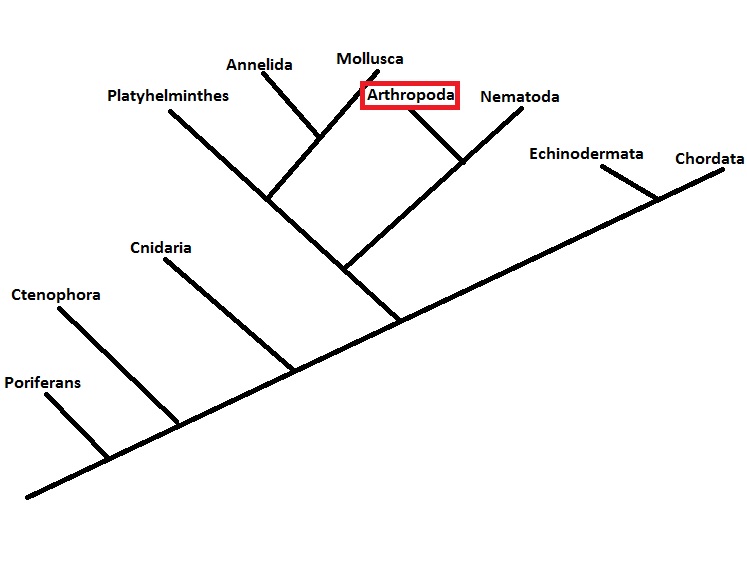
Class: Arachnida- A common misconception is
that spiders are insects. Spiders as well as a multitude of
other organisms have their own class- Arachnida. Members of the
class Arachnida consist of spiders, scorpions, ticks, mites, and
others. P. fera falls into this phylum because of its
segmentation into an anterior and posterior segment, possessing
chelicerae and pedipalps, and modified gills known as
book
lungs. These features are common throughout the class.
Order: Araneae- The Araneae order consists of
all the spiders, which is the largest entirely carnivorous group
of animals on the planet. The defining characteristics of this
order are that they consist of just two body parts, a cephalothorax and abdomen, using predation as a means of getting
food, a softer unsegmented abdomen, and eight legs. Some
webpages done on other members of the Araneae order:
Jumping Spider,
Brown Recluse,
Hobo Spider.
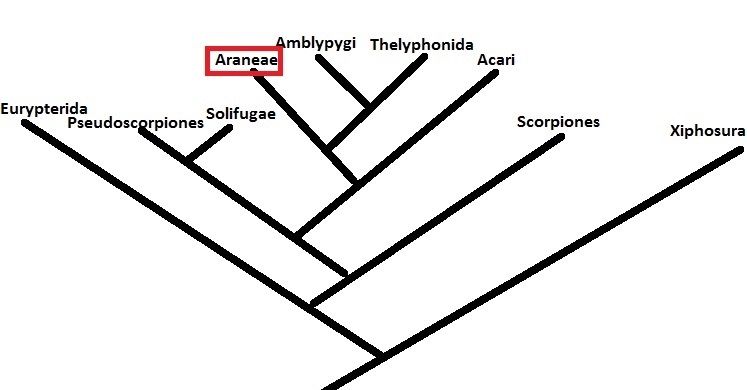
Family: Ctenidae- The Ctenidae family of
spiders, also referred to as Ctenids or the wandering spiders is
an interesting group of spiders. Members of this family are
highly aggressive and venomous. They seek out their prey instead
of just making a web and waiting like almost all other spiders.
Ctenids also have a distinctive groove that runs down the length
of their back. Because of the multitude of families within the
Araneae order a phylogenetic tree was made only for the
superfamily that Ctenids fall under known as Lycosoidea, or wolf
spiders. An interesting web page on this superfamily can be
found here:
Wolf
Spiders.
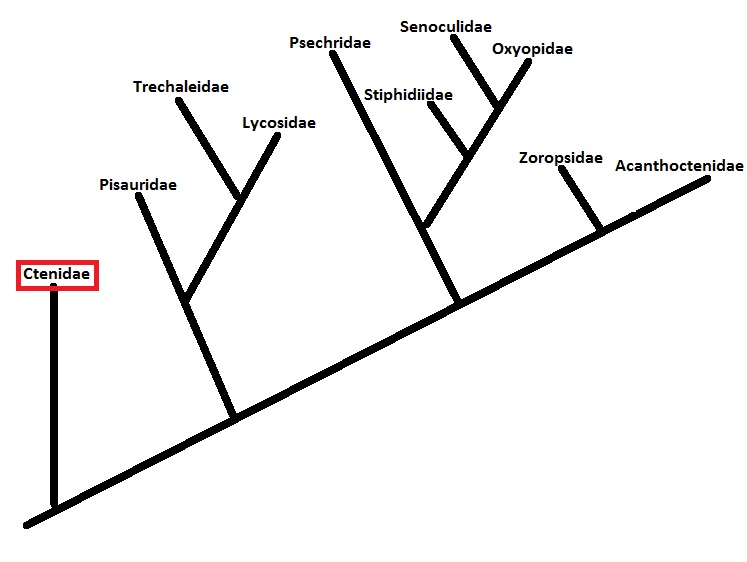
Genus: Phoneutria- Although all genera within
the Ctenidae family are quite similar, there are a few things
that set Phoneutria apart. When this genus feels
threatened they have distinctive rigid defensive position,
lateral movements, and elevated front legs. This Wikipedia
article gives a general overview of Phoneutria:
Brazilian Wandering Spiders.
Species: P. fera – there are eight different
species within Phoneutria genus however what sets P. fera apart
from the rest of the genus is that they are generally larger in
size and differences in the morphology of reproductive organs.
Although it is not a concrete difference, P. fera as well as
P. nigriventer tend to be more aggressive and vicious than the
other members of the genus.
Click here to be taken
to the Ecology page
